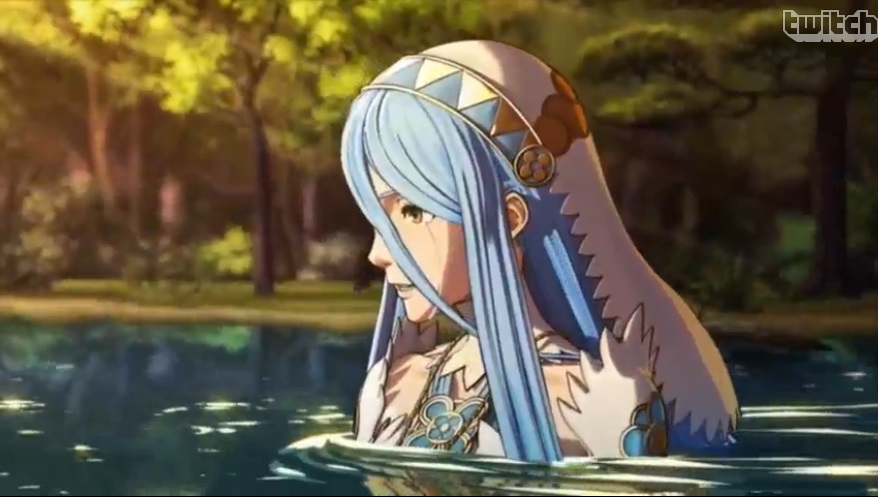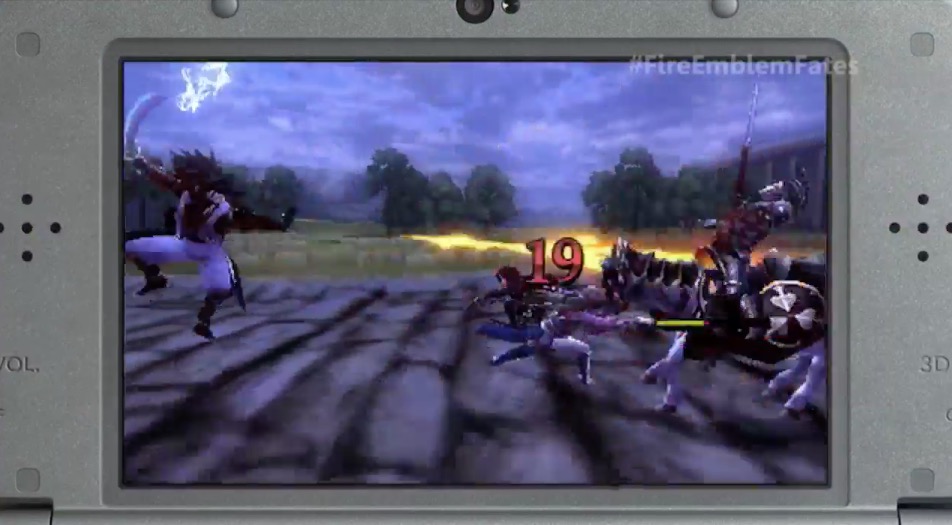Fire Emblem was always a series I liked but didn’t love until Fire Emblem: Awakening came out in 2013.
It quickly became my favorite game on the 3DS thanks to its memorable characters, snazzy production values, and rewarding turn-based systems. Now, Nintendo and developer Intelligent Systems has to follow that breakout hit with Fire Emblem Fates, and it’s trying to outdo Awakening by bombarding players with content.
Fire Emblem: Fates is actually three games. After a few missions, you make a choice that sets you on a path down one of three different campaigns. While you can only play one at first, you can buy the other paths as downloadable content for $20 each. But don’t worry, just one of these campaigns has enough content to justify the initial $40 price.
Everything that made Awakening great works splendidly in Fates, even if the initial wow factor isn’t quite as intense.
Check out our Reviews Vault for past game reviews.
What you’ll like
Turn-based tactical excellence
At its core, Fire Emblem: Fates is like an advanced game of chess, except all of your pieces are actual characters that can have skills ranging from basic sword attacks to ranged magical abilities or even songs that can let other units take an extra turn. Certain units work well against others. For instance, characters on winged creatures are weak against bows.
You’ll soon feel like a real battlefield commander as you spend agonizing minutes planning out each of your turns, ensuring that all of your units stay alive while clearing out as many enemies as possible. But it goes beyond that. Characters that fight next to each other can grow closer. Not only does this unlock fun conversations between them that you can view between battles, but nearby and friendly characters can boost each others stats and even offer additional attacks during combat.
And it gets even more complicated, but not in an overwhelming way. Fates does a good job of easing you into all of its systems, and you quickly get a handle on all of its tools. It’s also essentially the same (great) combat system Fire Emblem has always had, so series vets will feel comfortable.

Above: Time for a critical hit.
Multiple scenarios
Conquest for the hardcore
by Jeffrey Grubb
As Mike notes, Fire Emblem: Fates has two different main versions available at launch. While he played Birthright, I played Conquest. And I can tell you that this is probably not the best way to approach Nintendo’s new fantasy role-playing tactics game.
Conquest is a darker, more challenging version of the core Fire Emblem experience. You might think that sounds like your jam, but I think it might also make Birthright feel too tame when you end up going back to it. Additionally, the more nuanced story versus Birthright’s good-versus-evil plot might seem strange after getting to know the seemingly evil troops of Nohr.
This isn’t Pokémon. You benefit from choosing Birthright first in terms of a difficulty curve as well as storytelling.
And when you do get around to Conquest, you’ll likely find that the skills you’ve honed in Birthright are finally paying off during some seriously challenging missions.
Like I noted earlier, Fire Emblem: Fates is really three different games: Birthright, Conquest, and Revelation. That one is sort of a final version meant for fans to play after beating the other two. It doesn’t even become available as DLC until March 10. When you go to a store, you’ll initially have to choose between Birthright and Conquest (unless you get the special edition that includes all three). Not only do these offer different missions and characters, but they also play differently.
Birthright is more forgiving. It gives you more opportunities to level up your characters outside of the main missions. Its objectives are also typically simpler. Most missions just task you with defeating all of the enemies.
Conquest, meanwhile, limits the amount of experience points you can earn, which adds another level of complexity. You can’t just send your best character into every fight, since he’ll hog all of that precious experience and all of your other fighters will fall behind. Objectives are also more complex, sometimes adding time limits or other factors.
Besides those mechanics, both chapters just have different flavors. Birthright feels like a more traditional “good vs. evil” campaign, while Conquest has you siding with a nation that, at least initially, appears to lean a bit on the sinister side.
Some people have compared the splitting of Fates to what Pokémon usually does. That monster-training series also offers multiple versions of each game, but usually the differences are minimal. They’re ultimately the same. Each version of Fates, however, is a different adventure. I’ve been spending my time with Birthright, and I’m already excited to dive into the other chapters.
Building your castle
Castle-building is a new feature for Fire Emblem. You have a home base that you can outfit with shops and other buildings. You always return to this place between battles, which gives you a chance to improve your relationships with other characters and stock up on items. Some of the buildings, like a hot spring, offer diversions that don’t really offer much in the way of rewards, but they add some fun character moments. Others do offer considerable benefits, like a mess hall that increases the stats of your party for the next battle.
Your castle also gives you a reason to play Fates regularly. You can only do some activities, like trying your luck at a lottery that can give out rewards both lame and impressive, every few hours or so. Characters roaming your castle will also occasionally give you items or earn a temporary stat boost just by talking with you. The more you check in on your castle, the more rewards you’ll earn.
What you won’t like
Shoehorned children
Introduced in Awakening, children return in Fates. Two characters who become intimate can eventually marry and conceive a child. You can then play extra missions to recruit these offspring into your party. They’re some of the best characters in the games, since they inherit the skills of both of their parents.
However, the inclusion of children feels forced in Fates. It made sense in Awakening, since its plot involved time travel. Here, the game explains the rapid growth of your fresh offspring with a quick caption that suddenly explains an alternate dimension where your characters send their children to keep them safe. Oh, and time moves relatively slower there, so that’s why you can recruit them as full-sized adults pretty much instantly.
This explanation comes out of nowhere, and it begs a lot of questions. What about that nine month period where the mother should have been pregnant? Can anyone just go to this special dimension whenever they want? Then why not just go there, train for like five years (Dragon Ball Z style), and then fight the super-scary war?
I understand the designers’ dilemma. Children were a sensation in Awakening, and they rewarded players who maxed out as many relationships as possible. But I wish the concept made more sense in Fates. Or, maybe, they just should have tried something different that made more sense with this Fates’ world and story.
Conclusion
Fire Emblem: Fates is a fantastic turn-based strategy game. If you’re worried about the multiple versions, you don’t need to be. You’ll get a full experience with a single campaign, but it’s great to know that you can keep going and discover new content long after beating a single path.
Aside from that, Fates does feel like a comfortable sequel to Awakening. It’s almost afraid to distance itself too much from its predecessor, which you can most easily see in the shoehorned inclusion of children. It’s the same formula you expect from Fire Emblem, but the basics of the franchise have always been great. Still, the branching campaigns and the home castle do help to make Fates feel like its own entity.
Most important, series fans that plan to play all three chapters will have plenty to keep them busy.
Score: 90/100
Fire Emblem Fates comes out for the Nintendo 3DS on February 19. Nintendo provided GamesBeat with a limited edition copy of the game that included all three scenarios for the purposes of this review.
VentureBeat's mission is to be a digital town square for technical decision-makers to gain knowledge about transformative enterprise technology and transact. Learn More



